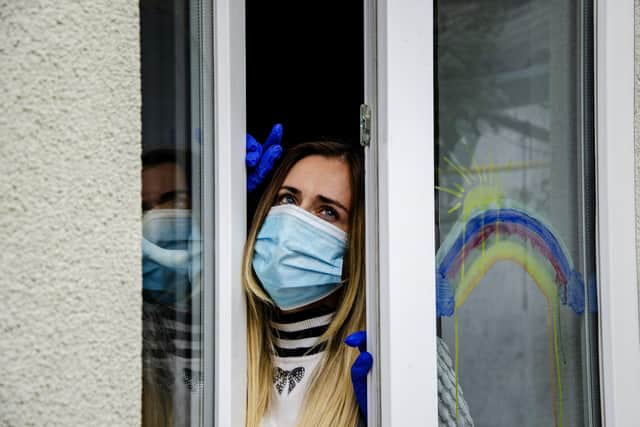Covid Scotland: Third of adults still socially distance
The phenomenon has been dubbed “long social distancing” – a reference to Long Covid, where a person suffers from symptoms of the virus for three months or more.
Some 55 per cent of people aged 70 and over in Britain, who are most vulnerable to the virus, “always or usually” socially distance when leaving the home, meaning they forgo visits to cafés, restaurants, cinemas, concerts and other crowded venues, according to the Office for National Statistics (ONS).
Advertisement
Hide AdAdvertisement
Hide AdMen are slightly more likely than women overall to socially distance – at 36 and 32 per cent respectively – across all adult age groups.


But while the eldest in the population are socially distancing the most, the practice goes way beyond the four million Britons who are classed as “extremely clinically vulnerable”.
Large numbers of people in younger age groups are also exercising a high degree of caution, even if the majority have largely gone back to life as it was before the pandemic, the figures show.
Some 16 per cent of 16 to 29 year-olds still socially distance “often or always”, compared to 31 per cent of 30 to 49 year-olds and 37 per cent of 50 to 69 year-olds, according to the ONS.
Furthermore, 46 per cent of adults said they had avoided physical contact with others – such as handshakes, hugs, holding hands and passing items – when outside the home in the past week, suggesting a high degree of caution among many of those not strictly social distancing.
That figure rises to 63 per cent among the over-70s.
“I am quite surprised by the sheer scale of long social distancing, especially among younger people,” said Simon Williams, of Swansea University, who has been researching the phenomenon.
“But we’ve been told for two years that we should treat people as a threat almost, so I think part of it is down to habit, which have become quite ingrained for many. Two years is a long time to be practising a given behaviour. And beyond the physical risk, people are more anxious and conscientious.”
The ONS social distancing figures did not include working from home, which were calculated separately.
Comments
Want to join the conversation? Please or to comment on this article.